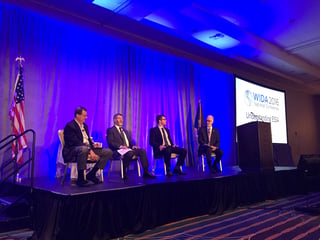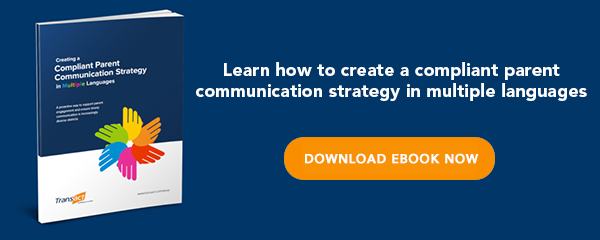On Thursday, October 13th 2016, TransACT’s Director of Federal Programs, Dr. David Holbrook, joined a WIDA panel discussing the opportunities and challenges of ESSA implementation. The panel was moderated by Jesse Markow, Chief Strategy Officer at WIDA, and included Dr. Gary Cook, Research Scientist at WIDA, and Kenneth Bond, WIDA Executive Committee Member and ESL/Bilingual Program Coordinator at the New Jersey Department of Education.
As districts and states march towards implementation of the Every Student Succeeds Act (ESSA) in the 2017-18 school year, EL advocates are wondering what to expect. Community involvement, integrated curriculum, and providing excellent professional development were a heavy focus at the WIDA Consortium’s annual conference on English learning and education last week in Philadelphia, PA.
 As a general consensus, the panel recognized the shift in regulatory control for federal education law from heavy federal control back to state and district control as an enormous opportunity for the provision of quality programming for ELs. When districts are not having to fulfill regulations that treat EL programs in different contexts all the same, they have more freedom to implement a local response to local problems and programs. Furthermore, the panel acknowledges that NCLB’s assignment of EL accountability to Title III placed it in a silo, which inhibited collaboration for EL programming. Under ESSA, EL students and parent, family, and community engagement are cross-cutting issues, and are mentioned in most - if not all - title programs. Additionally, EL accountability is now found in Title I. With ESSA making EL students a cross-cutting issue, it will force collaboration between programs and integration of services.
As a general consensus, the panel recognized the shift in regulatory control for federal education law from heavy federal control back to state and district control as an enormous opportunity for the provision of quality programming for ELs. When districts are not having to fulfill regulations that treat EL programs in different contexts all the same, they have more freedom to implement a local response to local problems and programs. Furthermore, the panel acknowledges that NCLB’s assignment of EL accountability to Title III placed it in a silo, which inhibited collaboration for EL programming. Under ESSA, EL students and parent, family, and community engagement are cross-cutting issues, and are mentioned in most - if not all - title programs. Additionally, EL accountability is now found in Title I. With ESSA making EL students a cross-cutting issue, it will force collaboration between programs and integration of services.
The challenge, the panel agreed, lies in how schools, districts and state’s work together to implement a new approach to programs. Several attendees at the panel discussion asked questions regarding how to ensure success for their students in the local context. All panelists acknowledged that proactively getting in front of the state, or in front of the people in the district who are going in front of the state, is critical to advocating for ELs. This is particularly true when ensuring the success for ELs in the local context. Under ESSA, parent, family, and community engagement is a massive priority, so ensuring there is no breakdown in communication can be accomplished by ensuring teachers and district leaders have this as a top priority. The panel noted that when communication breaks down, parent and community involvement diminish, and districts and schools find themselves out of compliance under the new law. “I think the non-regulatory guidance is pretty clear on the requirements of how to engage {with communities},” Dr. Cook responded. “If you are not engaging, you are not complying.”
Cautions were also raised. Dr. Holbrook flagged ambiguity for EL practitioners given that ESSA specifies in the standardized statewide procedures for identifying and exiting EL students that the proposed regulations require criteria that must be “valid, objective, and reliable”. The proposed regulations specify that this eliminates the option to use indicators like teacher judgment or performance on content tests. Dr. Holbrook noted that this essentially limits exit criteria options to basically one source: standardized English language proficiency assessments. Dr. Cook responded that there are three criteria (ESSA, Section 8101) to determine status as an EL1:
(i) the ability to meet the State's proficient level of achievement on State assessments described in section 1111(b)(3);
(ii) the ability to successfully achieve in classrooms where the language of instruction is English; or
(iii) the opportunity to participate fully in society.
He noted that standardized assessments might be the only option for the first part of the definition, but that states are able to define entry and exit procedures based on the student’s ability to achieve in the classroom and the opportunity to participate fully in society. The challenge then, is defining valid and reliable measures for the other two points of the definition.
1Linquanti, R., Cook, H. G., Bailey, A. L., & MacDonald, R. (2016). Moving toward a More Common Definition of English Learner: Collected Guidance for States and Multi-State Assessment Consortia. Washington DC: Council of Chief State School Officers.





